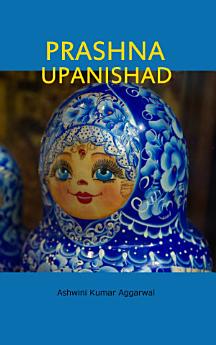Prashna Upanishad: Essence and Sanskrit Grammar
Acerca deste libro electrónico
This Upanishad gets its name from the word Prashna , which means “a Question” in Sanskrit.
When
one’s mind is peaceful,
the heart is loving,
basic needs are well taken care of,
Then
a question that arises is directly addressed by the Divine,
since it is addressed only to the Divine.
3rd Question
यत् चित्तः तेन एषः प्राणम् आयाति प्राणः तेजसा युक्तः ।
सह आत्मना यथा सङ्कल्पितं लोकं नयति ॥
yaccittastenaiṣa prāṇamāyāti prāṇastejasā yuktaḥ ।
sahātmanā yathāsaṅkalpitaṃ lokaṃ nayati ॥ 3.10
3.10 This verse is a Maha Vakya. It is a Supreme statement. It states an inviolable truth.
At the hour of Death, the Thought predominant in the mind becomes the Basis for the new birth,
governs parameters like place of birth, parents, resources, happiness and further evolution.
This is easily verified by observing and noting down the last thought at bedtime.
First thought in the morning while getting up shall be the same.
------------------------------------------------------------------------
For the Sanskrit Enthusiast, each verse is given in Devanagari, with a Latin transliteration, and Padacheda.
Acerca do autor
Ashwini is with the Sri Sri Ravi Shankar Ashram based in Punjab.
He loves to practice Yoga, perform Homa, study Sanskrit,
and be at home.







